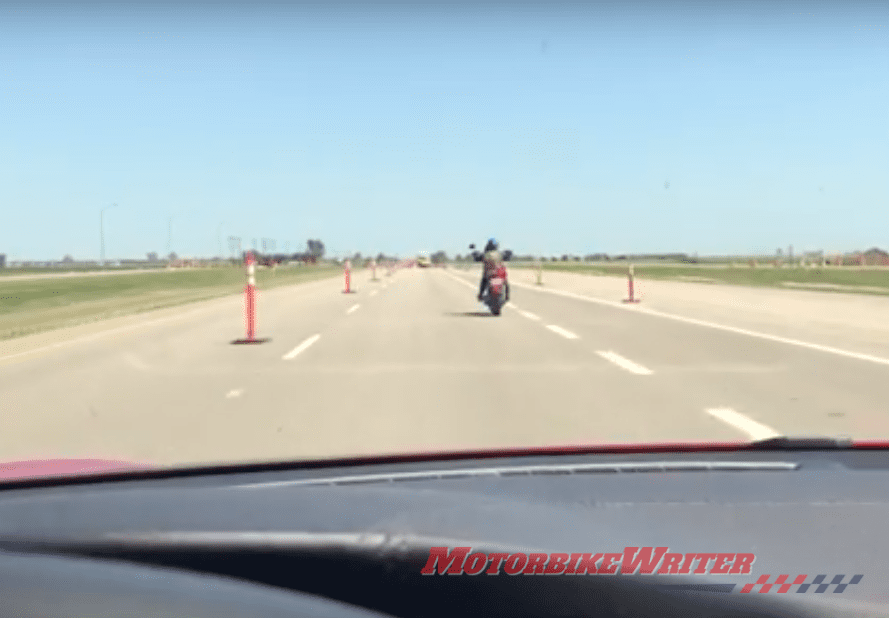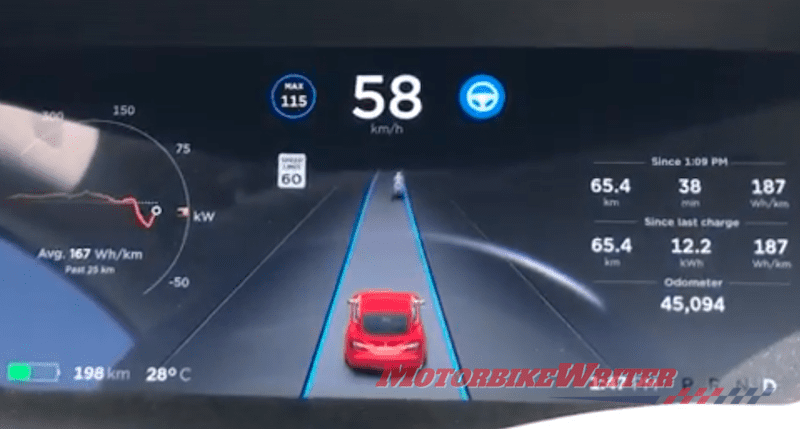The National Transport Commission is asking whether motorists would travel in an automated vehicle in its latest promotional video. The question to riders should be whether you feel safe riding on a road with automated vehicles around you as there is still concern about the ability for the technology to identify motorcycles on the road.
Here’s their leading video:
NTC boss Paul Ritter admits there are important issues about safety, but says “evidence suggests that automated vehicle technology has the potential to improve safety”.
However, a recent Dutch study found that the sensor technology currently being tested by autonomous vehicles still cannot see motorcycles, scooters and bicycles.
Over the past few years, there have been several instances of crashes involving autonomous vehicles, including a Tesla Model S rear-ending and seriously injuring a female rider’s bike in Norway in 2015 and a Chevy Volt knocking a lane-filtering rider off his bike in San Francisco last year.
This video seems to show that a rider scan be seen by a Tesla “Autopilot” autonomous drive function.
However, the Netherlands Vehicle Authority study of the Norway incident involving the Tesla has found that even though cars equipped with adaptive cruise control (ACC) systems can detect motorcycles, riders at the edges of the lane could disappear from the car’s sensors.
It found that motorcycles only needed to stray about a metre from the centre of the lane to be missed.
And that is usually where most riders would position their bike in a 4m-wide American lane.
Automated vehicle safety

Meanwhile the NTC boss says they are addressing safety and legal issues “in collaboration with all levels of government to create an end-to-end regulatory system for automated vehicles”.
The NTC will soon release a regulation impact statement for public consultation on a
safety assurance regime which aims to ensure that vehicles at all levels of automation are safe as
they come to market.
It will be interesting to see if motorcycles are mentioned.
The NTC will also look at how existing driving laws should be amended to allow for automated vehicles, how motor vehicle injury insurance schemes could be affected and how government will access and use the data generated by these vehicles.
“Manufacturers are progressively introducing automated features, such as braking, acceleration and steering,” he says.
“They still envisage a human driver taking control of the vehicle at some point in the journey or if something goes wrong.
“We aim to have an end-to-end regulatory system in place so that all levels of automated vehicles can operate safely and legally on our roads from 2020.
“Our focus is on ensuring the regulatory system remains flexible enough to accommodate evolving technologies as they come to market while always prioritising public safety.”
More information on the NTC’s automated vehicle work can be found on the NTC website.



